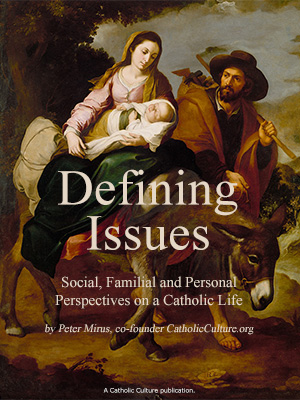Report on the 1998 Lambeth Conference
1. Every 10 years, Anglican bishops are invited to England by the Archbishop of Canterbury for the Lambeth Conference. These Conferences, first convoked in 1867, are thus major events in the life of the Anglican Communion and of considerable interest to ecumenical partners. The 13th Lambeth Conference met from 18 July to 8 August 1998. Some aspects of the recent Conference which may be of particular significance for relationships with the Catholic Church are considered below.
For the first time almost all the world's active Anglican bishops had been invited, making it the largest Lambeth Conference so far, with nearly 750 bishops (some 200 more than in 1988). The biggest regional grouping, about 30 per cent of the total, now comprises the African bishops rather than the Americans. Anglican women bishops were participating for the first time, all 11 having been consecrated since the last Lambeth Conference. Some 600 bishops' spouses followed a separate programme.
The Conference's work was carried out in four major sections, entitled: Called to Full Humanity; Called to Live and Proclaim the Good News; Called to be a Faithful Church in a Plural World; and Called to be One. Its primary purpose is to enable the bishops to consult one another. Most of the work was therefore carried out in small groups and discussed and refined in the sections. Reports and resolutions were then formulated for consideration by the whole Conference. Although the process is geared towards the formulation and debate of these resolutions, they are not binding on the provinces because there is no authority in the Anglican Communion higher than that of provinces and their synods.
The Lambeth Conference is far more than discussions and debates. Since the vast majority of Anglican bishops had not been at the previous Conference, their meeting was important in itself. They experienced the different strands of Anglicanism and its increasingly different cultural forms. Some formation was offered at special plenary presentations. Each day the basic rhythm was provided by prayer and worship, with the Eucharist and Morning and Evening Prayer celebrated according to the rites of different provinces. The linguistic and cultural diversity of contemporary Anglicanism was thus very evident. Each morning small groups met to pray and reflect on the Second Letter to the Corinthians. A Vigil of prayer and reconciliation led by Jean Vanier created a prayerful pause at the Conference's midpoint. It was evidently the intention that the discussion and debate would be informed by prayer and reflection.
2. Naturally, much of the Conference was given over to matters of general concern to the Anglican Communion. There was discussion of issues connected with mission, human rights, the environment, euthanasia, international debt, and economic justice. Considerable attention was paid to relations with other faiths, particularly Islam. A much debated resolution about human sexuality upheld faithfulness in marriage between a man and a woman .in lifelong union, and urged abstinence on those who are not called to marriage. It rejected "homosexual practice as incompatible with scripture" and stated that the Conference "cannot advise the legitimizing or blessing of same-sex unions, nor the ordination of those involved in such unions". What effect this reiteration of traditional Christian teaching will have on practice in more liberal provinces of the Anglican Communion remains to be seen.
3. The nature of ecclesial communion and its meaning for Anglicans was discussed on the basis of The Virginia Report. The work of a commission set up after the 1988 Conference, this report raised a series of questions about the effectiveness of the Anglican instruments of communion (the Archbishop of Canterbury, the Lambeth Conference, the Anglican Consultative Council and the Primates' Meeting) in the face of the spread and diversity of present-day Anglicanism. In particular, it asked whether Anglicanism now needs instruments for legislation and oversight which, for example, would enable it to say firmly that a particular local theory or practice is not compatible with Christian faith. The Anglican primates are to initiate in each province a decade of study of the report, and also of the issue of a universal ministry in the service of Christian unity raised by the Encyclical Letter Ut unum sint. The referral of this and other matters to the Anglican primates (who began to meet in a formal way less than 20 years ago) seems already to indicate a certain shift in the direction of a more united primatial authority. Indeed, this Conference like its predecessor urged the Primates' Meeting to develop a more collegial role so as to "exercise an enhanced responsibility in offering guidance on doctrinal, moral and pastoral matters".
A controversial matter was whether it is appropriate to allow the Archbishop of Canterbury to intervene in provinces other than his own, as he had done in the war-torn provinces of Rwanda and Sudan. A commission will consider this. There was concern that such a development might threaten the autonomy of the provinces.
4. The female bishops were warmly welcomed by the Archbishop of Canterbury in his opening address and took a full part. This was not made an issue in any evident way by bishops who oppose women's ordination. The Conference passed a resolution to indicate how the Communion should handle the two points of view about the ordination of women. It called on the provinces to "uphold the principle of 'Open Reception' "; to affirm that "those who dissent from as well as those who assent to the ordination of women to the priesthood and episcopate are both loyal Anglicans"; to ensure "appropriate episcopal ministry" to enable them to live in the highest degree of communion possible, recognizing that there should be no compulsion on any bishop to ordain women. They have agreed to disagree. Traditionalists will continue to seek alternative episcopal care from bishops who do not ordain women and refuse to recognize the sacraments celebrated by women and those ordained by them. The resolution effectively enshrines and legitimizes impaired sacramental communion among Anglicans for the foreseeable future. It therefore runs into conflict with other efforts to deepen and strengthen communion among Anglicans.
5. The search for Christian unity had a prominent place in the Conference. One of its four sections was wholly given over to ecumenical matters. Early on a special Ecumenical Vespers service was held, during which the many ecumenical participants were presented and at which Cardinal Cassidy gave an important address. The Catholic Church's delegates were Archbishop Alexander Brunett (Seattle), President of the U.S. Bishops' Conference Department for Ecumenical and Interreligious Affairs; Bishop Philip Pargeter (Birmingham), Chairman of the Committee for Christian Unity of the Bishops' Conference of England and Wales; Bishop Pierre Duprey, Secretary of the Pontifical Council for Promoting Christian Unity; and Fr Timothy Galligan, staff member for relations with the Anglican Communion at the Pontifical Council.
The ecumenical section considered three themes: the unity Anglicans seek; their dialogue with other Churches; and their relationships with new churches and independent Christian groups, whose growth and methods are perceived to be a major challenge, even a threat.
The Conference clearly restated that Anglicans see "full visible unity of the Church as the goal of the ecumenical movement". Some bishops, concerned that Anglicanism should show itself a trustworthy ecumenical partner, argued that there has now to be a new phase in which ecumenical agreements are clearly a reference-point both for their Communion's life and for any future ecumenical steps. In this sense the ecumenical movement may be challenging Anglicanism to greater clarity. Ecumenical consistency was therefore a recurring concern. Anglicans are engaged in many bilateral conversations, often at provincial or national level, some of which have led to new relationships on the way towards full communion. These have been taking place simultaneously in different parts of the world. The Conference resolved to set up a Standing Commission on Ecumenical Relations to monitor them carefully and ensure theological consistency between different dialogues.
A readiness to tolerate anomalies was a significant new element which may prove problematical in the future. A resolution "recognizes that the process of moving towards full, visible unity may entail temporary anomalies, and believes that some anomalies may be bearable when there is an agreed goal of visible unity, but that there should always be an impetus towards their resolution and, thus, towards the removal of the principal anomaly of disunity". The new Standing Commission is to give particular attention to discerning those anomalies which may be "bearable" and to suggest ways of resolving them. In the plenary session there was no discussion of what such "anomalies" might be, nor what criteria might make it possible to distinguish the ones that would be "bearable".
Ecumenical consistency is also increasingly important in the realm of liturgy. The Anglican Communion is no longer united by the liturgy of the Book of Common Prayer. The experience through the daily Eucharists of this new element in Anglican diversity clearly surprised many. The ecumenical section was particularly concerned that some recent liturgical revisions may be at variance with doctrinal agreements reached between Anglicans and other Churches. The Conference resolved that "new Provincial liturgical texts and practices be consonant with accepted ecumenical agreements reached in bilateral and multilateral dialogues, for example BEM and ARCIC".
Catholic-Anglican relations were the subject for one of the sub-groups and came into other discussions too. The Conference expressed gratitude for the work of ARCIC, and urged its continuation. It welcomed the idea of a high-level consultation to review Anglican-Catholic relationships; and, recognizing that the Agreements on Eucharistic Doctrine and on Ministry and Ordination have a "special status" because of the resolution passed in 1988, urged the provinces to receive them into their life. A process of study and response to the more recent ARCIC statements was called for. The Conference warmly welcomed the invitation in the papal En-cyclical Ut unum sint to consider the ministry of unity of the Bishop of Rome, strongly urging the provinces to respond. It was evident that, despite the difficulty, many Anglicans remain convinced of the great importance of the search for unity with the Catholic Church.
6. For relations with the Catholic Church it was important that the goal of full visible unity was reaffirmed. Dialogue with the Catholic Church continues to be given importance, and the need for Anglicans to be consistent with what has been officially agreed in our dialogue was underlined. Some of the bishops are undoubtedly convinced that their internal instruments of communion and authority will need to be strengthened, and this itself is partly a result of ecumenical dialogue. The important study of The Virginia Report will occupy the next decade, so it will be some time before it is clear if any changes will ensue. The moves to allow the Archbishop of Canterbury to intervene outside England in exceptional circumstances are certainly not a desire for an Anglican "pope", and provincial autonomy remains primary. The restatement of traditional teaching about human sexuality was also a positive outcome. At a concluding press conference the Archbishop of Canterbury said that this should "reassure our ecumenical partners where we are positioned in matters of our theology and sexual morality".
All the resolutions from the Lambeth Conference are, however, merely advisory. They have "moral and pastoral authority for the life and witness of the Communion, although they are not legislatively binding" (in the words of a Conference document). The actual weight of this authority is hard to discern. The result of the debate on human sexuality may provide a test-case: many Anglicans will be watching the Episcopal Church in the USA, in particular, to see whether it takes any notice of the resolution passed with such a large majority by the Conference.
© L'Osservatore Romano, Editorial and Management Offices, Via del Pellegrino, 00120, Vatican City, Europe, Telephone 39/6/698.99.390.
This item 825 digitally provided courtesy of CatholicCulture.org






